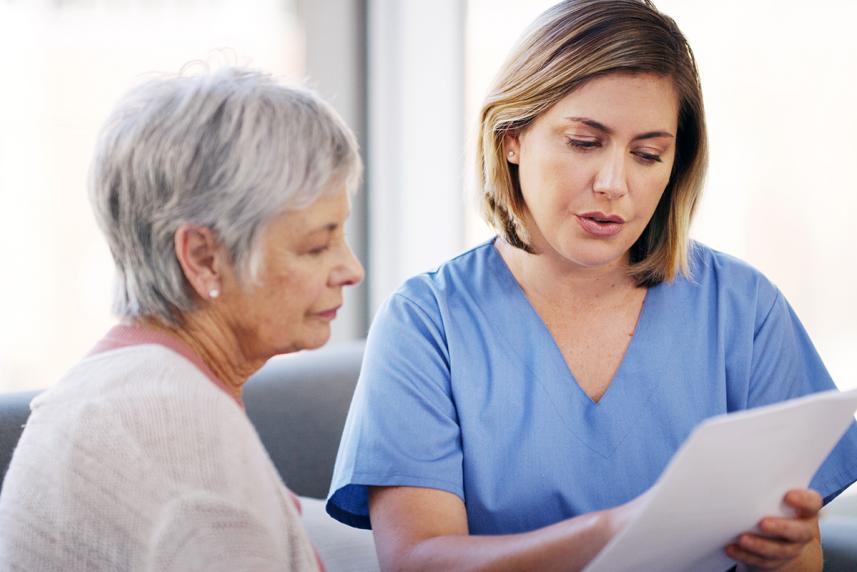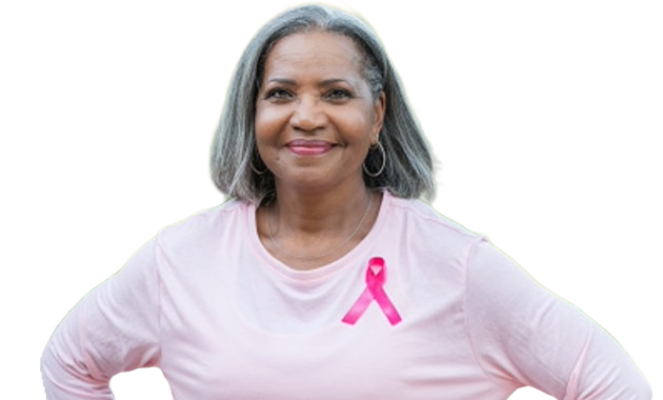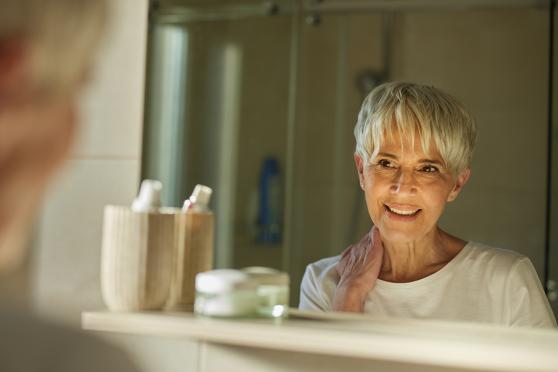Get the most out of your breast cancer screening
Answers to four essential questions about this super-important test.

Bet you’ve marked your calendar: Time for your annual mammogram. After all, you’ve probably been getting this screening for decades. It’s part of your routine — and a big part of staying healthy.
Mammograms are simple tests that detect breast cancer. They use a series of low-dose X-ray images of the inside of your breasts. A mammogram can show growths or other signs of cancer when they’re too small for you — or your doctor — to notice.
If you’ve been getting your mammograms for years, good for you. A mammogram is one of the best tools for breast health, even if you’ve reached your 65th birthday. Here’s a quick refresher that answers all your mammogram questions.
I’m in my 60s. Is breast cancer screening still a big deal for me?
Yes! Turns out, about 1 in 8 women will get breast cancer in their lifetime, according to the American Cancer Society (ACS). The median age at the time of diagnosis is 62.
“From age 65, it’s very important to get your annual screening mammogram,” says Mary Chamberlin, M.D., a breast oncologist at Dartmouth-Hitchcock Medical Center in Lebanon, New Hampshire. “That’s probably the highest-risk age group, between 65 and 70.”
The good news is that about 64% of all breast cancers are caught early when they’re most treatable, reports the National Breast Cancer Foundation. Detecting cancer early is the main purpose of a mammogram.

What’s the screening schedule for women my age?
Different organizations recommend different timelines, so have a conversation with your doctor about what’s right for you. Here are the current guidelines:
- For women between 40 and 74 years. As of May 2023, the U.S. Preventive Services Task Force recommends that women should get a mammogram every two years starting at age 40 until age 74. The ACS recommends an annual screening from age 45 to 54, with screenings every one or two years after that for as long as a woman is in good health.
- For women age 75 and older. Talk with your doctor about whether to continue screenings. Your doctor will recommend what’s best for you depending on your risk factors and health.
It’s been a while since I had a mammogram. Remind me how I should prepare.
You’ll undress from the waist up and stand in front of the machine. The technician will help you place your breast on it for a few seconds for each view. You might feel a bit of discomfort while the machine is compressing your breast, but it’ll be over in no time.
Follow these tips to help the process go smoothly:
- Keep your underarms and breasts free of deodorants, creams, lotions, powders, and perfumes.
- Make sure the areas under your arms and breasts are clean.
- Wear a top and bra that are easy to take off and put back on.
- Try to relax. Remember, only about two to four out of every 1,000 mammograms lead to a breast cancer diagnosis.
Are there any other tests I might need?
There are two other tests that your doctor might suggest in addition to a mammogram:
Breast MRI: Certain women at high risk of breast cancer may also get screened with a breast MRI. This test uses radio waves and strong magnets to make detailed pictures of the inside of your breast. It can find some cancers that a mammogram doesn’t show.
You’ll lie face down on a narrow table with your breasts hanging down through an opening. A technician will slide you into a large tube, where you’ll hear loud, thumping noises. It’s not painful and takes about 45 minutes or less.
Breast ultrasound: This test uses sound waves and their echoes to take pictures of the inside of your breasts. Ultrasound can show breast changes, such as cysts or bumps, that might not show up on a mammogram. Your doctor might order an ultrasound to get a better look at something suspicious on your mammogram.
Ultrasound may also be used for additional screening in women with dense breast tissue. Your breasts tend to get less dense over time, but nearly one-third of those over 65 still have dense breast tissue, according to a large 2021 study.
The bottom line is that mammograms are an important way to detect breast cancer. If you’re confused about what’s right for you, talk to your doctor. Together, you’ll consider your medical history and any risk factors for breast cancer before making a decision.
Additional sources:
Breast cancer statistics: National Breast Cancer Foundation
Breast ultrasounds: American Cancer Society
Mammogram tips: American Cancer Society
Scheduling guidelines: U.S. Preventive Services Task Force
Breast density study: JAMA Network Open
H3832_8750_848451_5MS540_24_C
© 2023, Linkwell Health, Inc. All content owned or licensed by Linkwell Health, Inc. All rights reserved.


